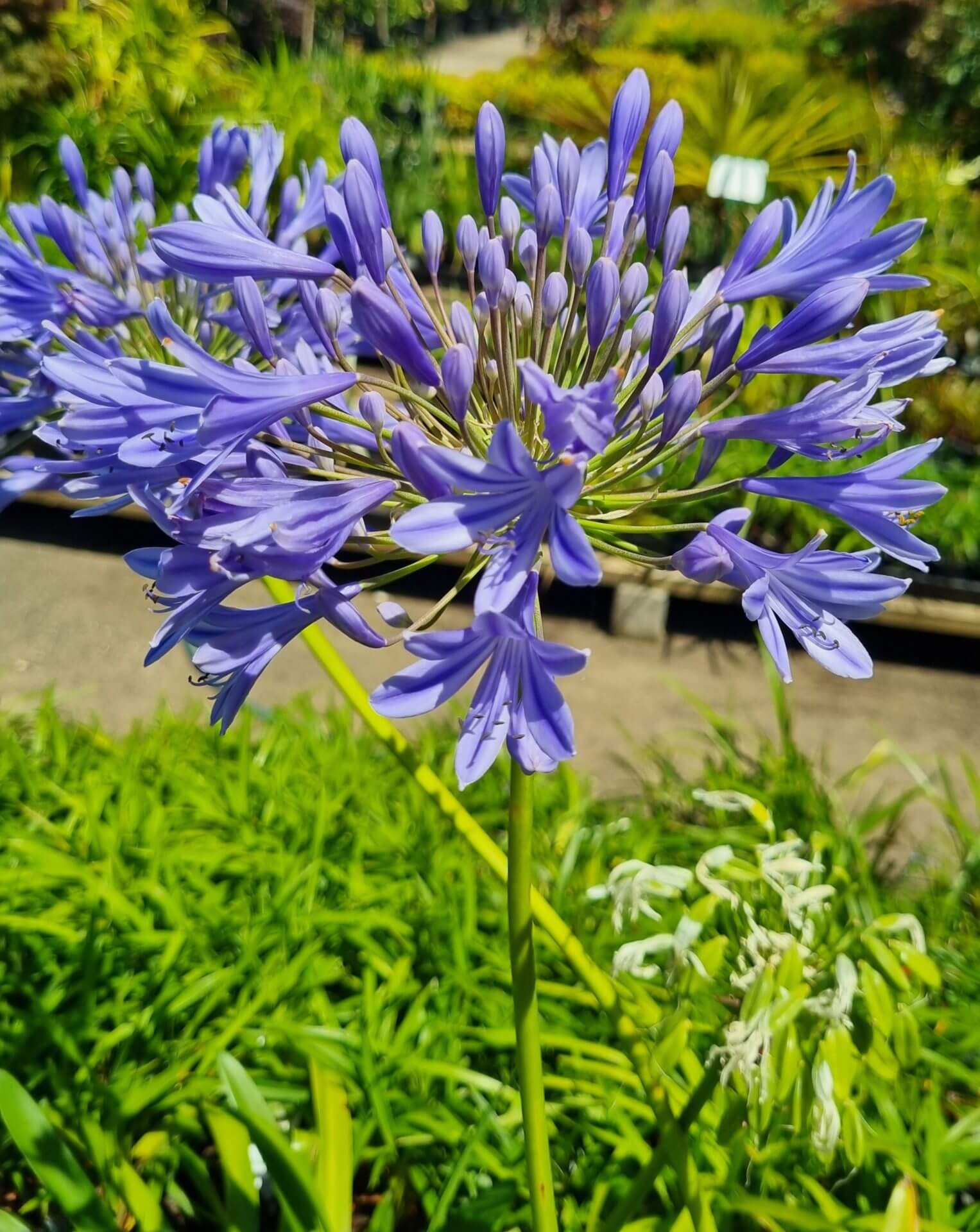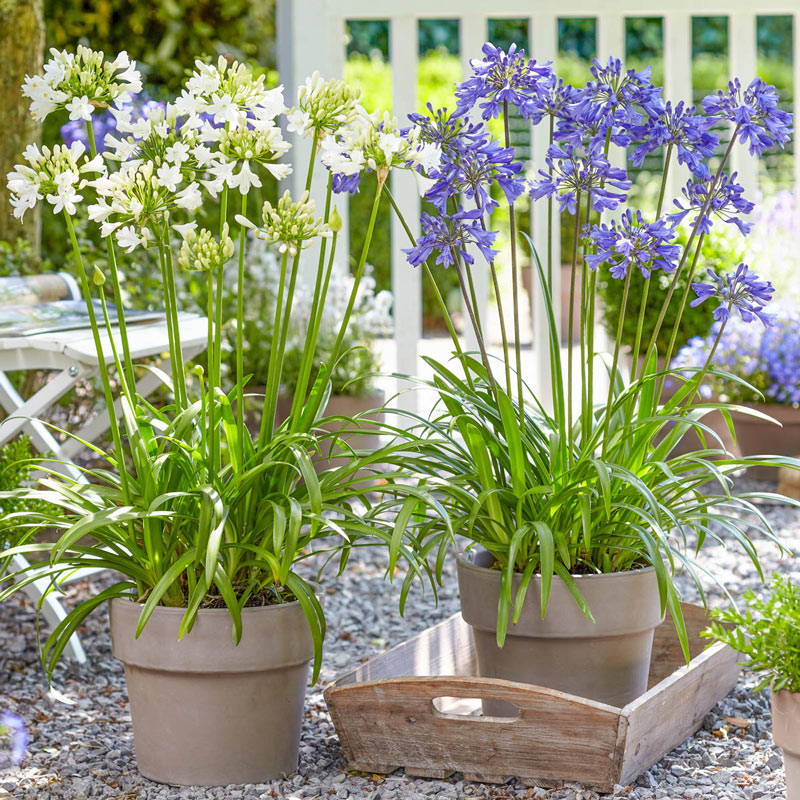Expanding Agapanthus: A Complete Guide to Beautiful Blooms
Mastering the Art of Agapanthus Care: Important Actions for Healthy And Balanced Development and Lively Flowers
In the world of gardening, the farming of agapanthus stands as a satisfying venture for those that seek to nurture these sophisticated flowering plants. With their striking flowers and graceful foliage, agapanthus has actually caught the focus of garden enthusiasts worldwide. Nevertheless, achieving optimum growth and vibrant blossoms needs a nuanced method that encompasses various important actions. From choosing the ideal range to grasping pruning strategies, the trip in the direction of growing growing agapanthus plants is diverse and holds the key to opening the complete possibility of these botanical gems.

Choosing the Right Agapanthus Selection

When selecting the ideal Agapanthus range for your garden, take into consideration variables such as environment suitability, flower shade, and growth practice. Agapanthus, frequently called Lily of the Nile or African lily, can be found in a variety of shades ranging from shades of purple and blue to white. Choose a bloom shade that complements your existing yard scheme to create an unified landscape. Additionally, think about the environment in your region to make certain the Agapanthus selection you select can prosper in your particular problems. Some selections are much more forgiving of cold temperatures, while others favor warmer climates. Understanding the growth routine of different Agapanthus varieties is important for correct positioning within your yard. Some selections have a clumping growth routine, suitable for boundaries or containers, while others have an even more spreading nature, suitable for ground cover or mass plantings. By very carefully examining these factors, you can choose the best Agapanthus range to improve the elegance of your garden.
Suitable Planting Conditions
Thinking about the optimal ecological requirements is crucial for successful Agapanthus growing. Agapanthus plants are delicate to cool temperatures and must be secured from frost during winter season months.
To ensure healthy and balanced growth and dynamic blossoms, plant Agapanthus bulbs at a deepness of regarding 2-4 inches and room them 8-12 inches apart. Including raw material, such as compost, to the dirt can enhance drain and fertility, promoting durable origin development. Mulching around the base of the plants aids retain wetness and suppresses weed growth. Regular watering is important, especially throughout the expanding season, to keep the soil consistently damp however not waterlogged.
Watering and Fertilizing Tips
Maintaining correct wetness levels and supplying important nutrients are crucial elements in the care routine for Agapanthus plants. When it comes to watering Agapanthus, it is vital to strike a balance. These plants choose consistently wet dirt but are at risk to root rot if overwatered.
Fertilizing Agapanthus is crucial for promoting healthy growth and respected blooms. Apply a balanced plant food, such as a 10-10-10 formula, in the early springtime as brand-new growth arises. Repeat this application every 6-8 weeks throughout the growing period. Avoid extreme fertilizing, as it can result in lavish foliage at the cost of blossoms. Always comply with the manufacturer's guidelines for proper dilution and application techniques. By adhering to these watering and feeding ideas, you can guarantee your Agapanthus plants thrive and produce lively, lasting flowers.
Pruning Techniques for Agapanthus
Pruning Agapanthus plants at the suitable times and with correct strategies is important for preserving her latest blog their health and wellness and advertising ideal development and flowering. The ideal time to trim Agapanthus is in late winter months or early spring prior to new development arises.
For flowered stems, wait till the flowers have actually withered and after that trim them back to the base. This not just tidies up the plant's look but also urges the advancement of new flower buds. Deadheading spent flowers can likewise redirect the plant's energy right into producing more blossoms rather than establishing seeds. However, if you wish to gather seeds for propagation, leave some blossoms to fully grown and completely dry on the plant.
Keep in mind to use tidy, sharp tools to make precise cuts and lower the risk of introducing conditions. Agapanthus. Normal pruning will certainly help maintain your Agapanthus looking healthy and balanced and cool while making sure an abundant display of attractive blooms
Handling Typical Pests and Diseases
After making sure proper trimming strategies for Agapanthus, it is vital to resolve common insects and illness that can impact the health and wellness and vigor of these plants. Agapanthus plants are typically hardy but can still drop target to particular concerns. One typical parasite that affects Agapanthus is the Agapanthus gall midge. This tiny, orange fly lays its eggs in the foliage, causing altered development and blossom buds that fall short to open. To battle this pest, prune and damage any type of damaged plant parts and take into consideration making use of insecticidal soap.
Additionally, Agapanthus plants can suffer from root rot if they are planted in poorly draining dirt. By being cautious and taking prompt action against diseases and pests, you can help your Agapanthus plants flourish and create vibrant flowers. Agapanthus.

Verdict
Finally, mastering the art of agapanthus treatment includes selecting the ideal variety, providing perfect growing conditions, correct watering and fertilizing, appropriate trimming strategies, and addressing typical pests and diseases. By complying with these vital actions, you can make sure healthy growth and vibrant blossoms for your agapanthus plants. Remember to routinely monitor and keep your plants to advertise their overall health and long life.
To ensure healthy and balanced development and lively flowers, plant Agapanthus bulbs at a deepness of concerning 2-4 inches and room them 8-12 inches apart. By complying this with these watering and feeding tips, you can ensure your Agapanthus plants grow and create dynamic, durable flowers.
One typical pest that influences Agapanthus is the Agapanthus gall midget. Furthermore, Agapanthus plants can endure click here to find out more from root rot if they are planted in badly draining soil. By adhering to these essential actions, you can make certain healthy and balanced development and vivid blooms for your agapanthus plants.